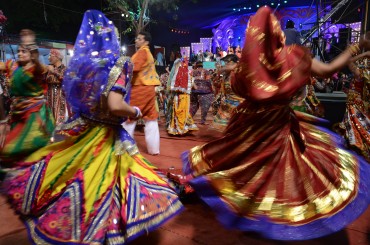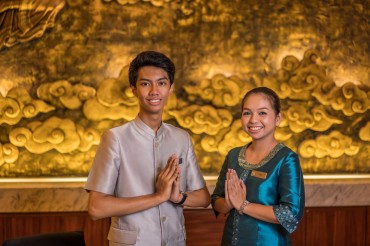It’s time to bid farewell to the festival of ‘Shakti’ and ‘Bhakti’. Navratri, literally meaning nine nights is coming to an end with full pomp and show. Generally starts with the new moon between mid-September to mid- October, this festival celebrates women and her power. The first three days of Shakti celebrates Goddess Durga/Kali who is responsible to destroy the impurities present in this world. The next three days are devoted to the one who bestows divine wealth – Goddess Lakshmi following Goddess Saraswati – the patron of wisdom who is worshiped on the last three days. The tenth day, marked as ‘Vijaya Dashami’ also known as ‘Dasera’ is meant to be the dawn of self- knowledge.
There is one more meaning attached to this festival. It is believed that in Dvaparyuga, that is during Mahabharat, Arjuna – the mighty warrior got his weapons back on the last two days of Navratri after the ‘Agyaat Vaas‘ which the Pandavas went through. He had performed a special Puja on those last two days. In remembrance to this incident from our epic, the smaller kingdoms even after independence celebrated and casted two days as a show of their military prowess and they organize ‘Ayudha Puja‘ in veneration of their weapons and machines even till date.
Hindus all over the world celebrate this festival in different ways and sometimes for different reasons. The South Indians celebrate this festival as kolu (sitting in state) where there is a grand display of traditional clay dolls while the Bengalis celebrate Durga Puja by gathering in a pandal and worshiping the Goddess in their traditional attire. People from northern part of India specially New Delhi and Punjab invite seven unmarried girls to their residence, wash their feet and put a forehead mark to revere them as a goddess. They are gifted with the new grains and chick peas specially to symbolize fertility and prosperity. People from Maharashtra observe a strict fast for all nine days surviving only on fruits, few vegetables and selected beverages.
Who catches the most of attention is, women from Gujarat who celebrate the festival in a very exciting manner. They dance all nine nights away in a circular dance style which is termed as ‘Garba’. The word ‘Garba’, emerged from a Sanskrit word ‘Garbha’ meaning ‘womb’ celebrates the creative energies of goddesses. A clay jar with holes all around and a lamp inside is kept in the middle around which the women dance all nine nights in circular fashion. The pertinent meaning which can be attached to this is – ‘fertility’, the theme which is reinforced in all the rituals. This traditional dance of Garba is followed by the Dandiya, played by sticks. This dance is reminiscent of Krishna who did Ras Leela with the cowherd girls of Vrindavan.
But wait! Do people still attach the same reason to this festival? Do they still celebrate it in the same way they used to before? No! Period… If you look at garba, earlier it was completely a traditional and family orientation. It was collectivist in nature and done within a small locality (reminds us of the block parties of today). Today? The same garba is transformed to glitzy shows with expensive entrance tickets. The style of music earlier was very classical and indigenous in nature but today, the western form of music is rocking in few areas and people have adopted dancing on those tunes.
You know the yet another relevance of this festival? Well, the no caste and religious difference it ‘used’ to promote. Today, we all are aware of the scenario which is completely opposite where, people from a particular religious group are restricted and barred to enter the garba grounds. The counter comment of the religious heads’ is equally controversial and disturbing. What I wish to express here is the religious and piety attached to this festival has taken a non-secular way (no matter what the reason behind this decision is).
One more drastic change which took place over the period of time is- ‘The women’s festival taken over’. By whom is a big question! Until about 20 years ago, garba was just a women’s affair but, off-late in late 1960’s and early 1970’s young boys had started participating in garba. Gradually the men collected funds from neighborhood and brought this family affair to a public arena. That’s how we see garba played on huge grounds today.
The reason behind it being women’s festival was the ‘feminine’ energy of the divine goddesses. It is believed that these nine days and nights is the reason to celebrate the transitory nature between the four seasons. Within these days the change of seasons takes place and that fasting is also done to adjust yourself to the new atmosphere and season all over again.
A concluding remark- “The Indian concept of womanhood is not about transient youth and beauty. It is about power and energy which sustains the world.”

























































Comments